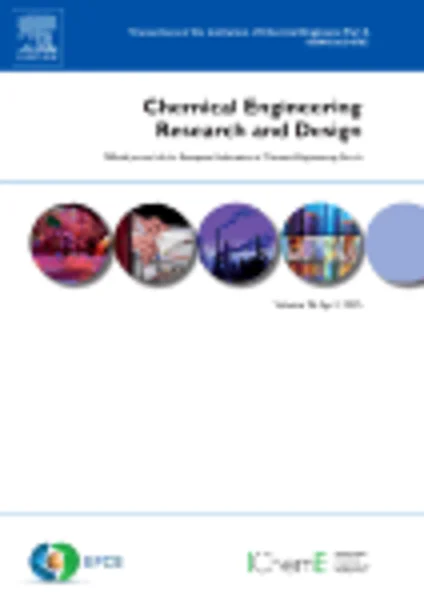-
adsorption of 4-chlorophenol by inexpensive sewage sludge-based adsorbents
جزئیات بیشتر مقاله- تاریخ ارائه: 1392/07/24
- تاریخ انتشار در تی پی بین: 1392/07/24
- تعداد بازدید: 825
- تعداد پرسش و پاسخ ها: 0
- شماره تماس دبیرخانه رویداد: -
sewage sludge was used as precursor to develop a potential inexpensive adsorbent by both simple drying and pyrolysis. the resulting materials were evaluated as adsorbents for the removal of 4-chlorophenol (4-cp) from aqueous solution. the dried biosolids showed a bet surface area lower than 3 m2/g, which yield a maximum adsorption capacity of 0.73 mmol 4-cp/g at ph 5.0 and 15 °c. the carbonization of biosolids under relatively mild conditions allowed obtaining materials with bet surface area up to 45 m2/g, which led to a significant increase of the maximum adsorption capacity (1.36 mmol 4-cp/g). the high ash content of the starting material (23%, d.b.) limits the development of porosity on a total dry-weight basis. adsorption data were well fitted to the redlich–peterson isotherm equation whereas the most commonly used langmuir and freundlich equations were less satisfactory probably because of the occurrence of summative adsorption phenomenon. a thermodynamic study of the adsorption showed the spontaneous and exothermic nature of the process. thus, simple drying and carbonization provide two ways of valorization of sewage sludge through its conversion into inexpensive low-rank adsorbents potentially useful for the removal of some hazardous water pollutants, like chlorophenols and related compounds.
مقالات جدیدترین رویدادها
-
استفاده از تحلیل اهمیت-عملکرد در ارائه الگوی مدیریت خلاقیت سازمانی و ارائه راهکار جهت بهبود
-
بررسی تاثیر ارزش وجوه نقد مازاد بر ساختار سرمایه شرکت های پذیرفته شده در بورس اوراق بهادار تهران
-
بررسی تأثیر سطح افشای ریسک بر قرارداد بدهی شرکت های پذیرفته شده در بورس اوراق بهادار تهران
-
بررسی تأثیر رتبه بندی اعتباری مبتنی بر مدل امتیاز بازار نوظهور بر نقد شوندگی سهام با تأکید بر خصوصی سازی شرکت ها
-
تأثیر آمیخته بازاریابی پوشاک ایرانی بر تصویر ذهنی مشتری پوشاک ایرانی (هاکوپیان)
-
عوامل خطر ساز بیماری های قلبی- عروقی در بندر بوشهر بر اساس پروژه مونیکای سازمان جهانی بهداشت؛ پروژه قلب سالم خلیج فارس
-
تاثیر تمرین های تقویتی بر شاخص های بیومکانیکی راه رفتن در بیماران همی پارزی مزمن ناشی از سکته مغزی
-
بررسی تاثیر مکش بافتی اولیه بر پتانسیل رمبندگی خاک
-
عملکرد میراگرهای ویسکوز و اصطکاکی در بهبود پاسخ لرزه ای سازه های جداسازی شده ی جرمی
-
تظاهرات دهانی کودکان مبتلا به hiv
مقالات جدیدترین ژورنال ها
-
مدیریت و بررسی افسردگی دانش آموزان دختر مقطع متوسطه دوم در دروان کرونا در شهرستان دزفول
-
مدیریت و بررسی خرد سیاسی در اندیشه ی فردوسی در ادب ایران
-
واکاوی و مدیریت توصیفی قلمدان(جاکلیدی)ضریح در موزه آستان قدس رضوی
-
بررسی تاثیر خلاقیت، دانش و انگیزه کارکنان بر پیشنهادات نوآورانه کارکنان ( مورد مطالعه: هتل های 3 و 4 ستاره استان کرمان)
-
بررسی تاثیر کیفیت سیستم های اطلاعاتی بر تصمیم گیری موفق در شرکتهای تولیدی استان اصفهان (مورد مطالعه: مدیران شرکتهای تولیدی استان اصفهان)
-
بررسی نقش مذهب در تحلیل شخصیت قهرمان داستان در نمایشنامه های برگزیده اول، دوره هشتم تا دهم جشنواره تئاتر رضوی
-
کاوشی در تکنولوژی فکر از منظر اسلام با رویکرد جامعه شناختی
-
وظایف و مسئولیت مدنی شهرداری شهرستان بافت
-
boron nitride nanocone as an adsorbent and senor for ampicillin: a computational study
-
the effect of suffusion phenomenon in the increasing of land subsidence rate




سوال خود را در مورد این مقاله مطرح نمایید :